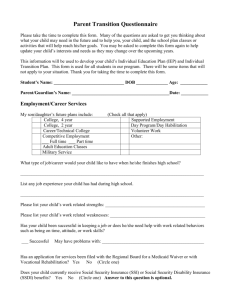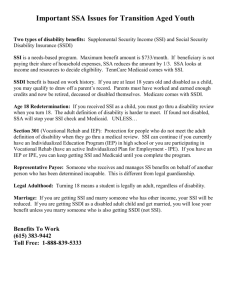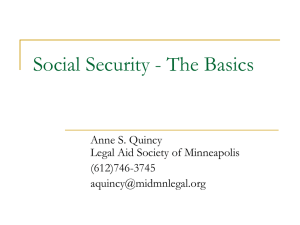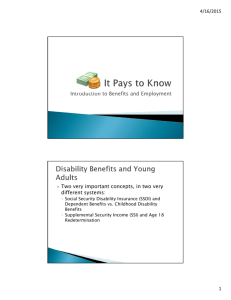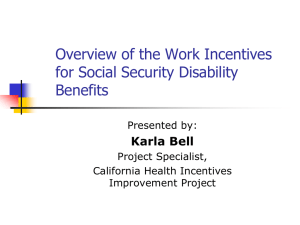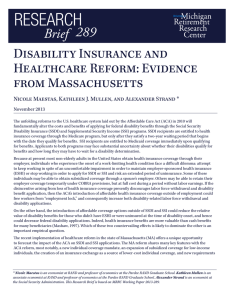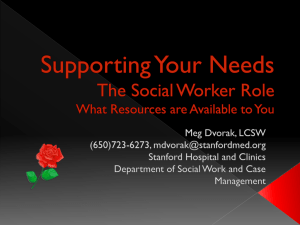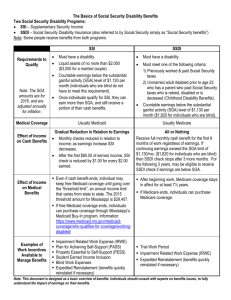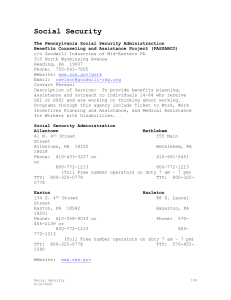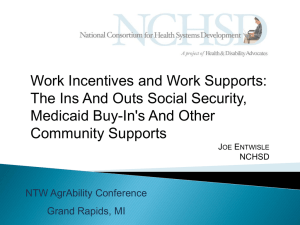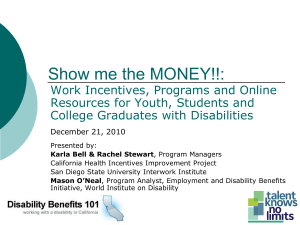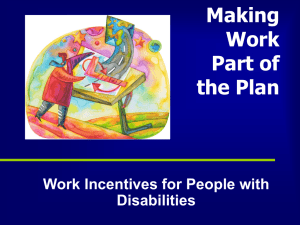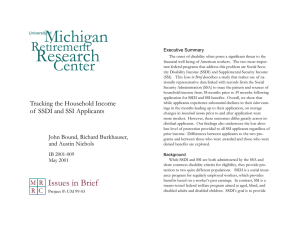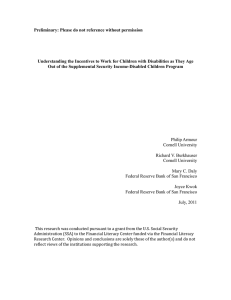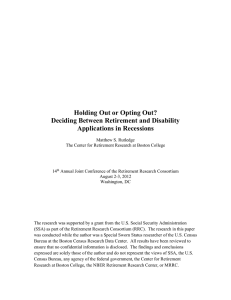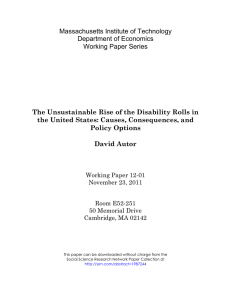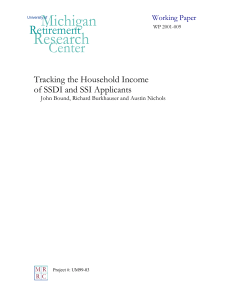Basics of Social Security Disability Benefits
advertisement
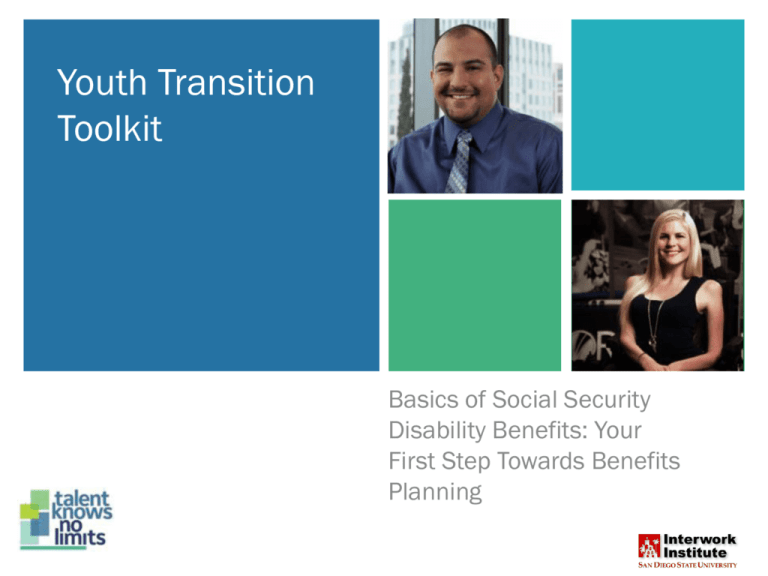
Youth Transition Toolkit Basics of aSocial Security State as Model Employer Disability Benefits: Your Training Series First Step Towards Benefits Planning Overview Benefits Social Work of accessing benefits and working Security Disability Benefits Incentives available Benefits Planning Tools, Tips, Skills and Resources Benefits and Transition Planning Getting benefits can be your bridge to greater independence – but it isn’t a lot of money to live on… Receiving benefits does not necessarily mean living in poverty Will lead you to working, becoming a tax payer and you will be able to buy products and services you need and want Once benefits are accessed, learn the work incentives! Social Security Disability Benefit Programs Social Security Administration (SSA) It is very important to understand which program your receive your benefits from and the difference between the SSDI and SSI programs Social Security Disability Insurance (SSDI) Based on your own work record or your parent’s work record (Childhood Disability Benefits) Supplemental Security Income (SSI) Based on need SSI and SSDI = “Concurrent Benefits” How are SSI and SSDI similar? You must qualify as having a “disability”: To be eligible for SSI or SSDI, Social Security’s definition of disability must be met You also must be unable to work at a certain level, (which Social Security calls “Substantial Gainful Activity”) for at least 12 months due to a physical or mental impairment 2012 Substantial Gainful Activity = $1010 or $1690 for blind individuals They both provide cash benefits and health insurance How are SSI and SSDI different? You get SSI because you have a disability and have low income and resources: You and/or your parents make under a certain amount of money You have less than $2000 in any of your bank or savings accounts (called “assets” or “resources”) You get SSDI because you have a disability, and you or your parents have enough “work credits” You or your parents have worked and paid into the “Social Security trust fund” You can have savings, there is no resource limit How much SSI or SSDI will I receive? 2012 California SSI Monthly Payment Rates $854.40 (Individual-own household) $625.17 (Individual-household of another) $909.40 (Blind individual) $680.17 (Blind-household of another) SSDI Payment amounts are based upon you or your parents’ Social Security earnings record What benefits am I on? Benefits Planning Query (BPQY) A brief report with details about your SSI and/or SSDI benefits, health coverage and work and earnings history Request from your local Social Security Office Call the Social Security Administration (SSA) at: 800-772-1213 (voice); 800-325-0778 (TTY) To learn more about the BPQY see the “What benefits am I on now?” Article on the DB101 home page: http://ca.db101.org Medicare vs. Medi-Cal Both are types of health insurance which are provided to individuals with disabilities. Medicare – comes with SSDI or CDB Medi-Cal – comes with SSI, or you can get it by applying at your local County Social Services office You can have Medi-Cal, Medicare, and/or private health insurance at the same time Medicare Card Medi-Cal Medi-Cal is a health insurance program that pays medical expenses for people with low income and little or no resources Work Is Good and Knowledge Is Power! While working you will be earning Social Security credits that can lead to SSDI eligibility and retirement benefits in the future In general, young people who get SSDI, CDB or SSI will be better off financially when they go to work Work Incentives differ among programs Knowing how working may or may not affect benefits can affect employment decisions and overall quality of life Use Disability Benefits 101 and the benefits calculators – planning is key! www.db101.org SSI and SSDI Work Incentives 13 Benefits Planning Tools, Skills and Resources for Results The Benefits Binder: your notebook and log of phone calls, office visits, and names of service staff you contact. File original paycheck stubs, government letters and receipts here. Reporting Requirements: Who is responsible, when? If you have a payee, the payee is responsible to report changes to Social Security. If not, it’s the beneficiary. Report income and other life changes timely Know your appeal rights. A Notice of Action explains them. Utilize Benefits Planning Tools and Resources: Disability Benefits 101 website (www.db101.org), and local benefits planners. These tools, rules and skills can result in timely and improved customer service with benefit programs 14 Mary’s Story Receiving SSI and Medi-Cal benefits, living independently, and going to community college SSI benefits not enough to live on – interested in going to work part-time but worried about losing benefits Visits www.disabilitybenefits101.org, learns she is able to keep all benefits plus her earnings from a part-time job at Target through the Student Earned Income Exclusion work incentive program – can now afford to go shopping! Reports earnings to Social Security by sending in paystubs, keeps track of paperwork in her benefits binder

